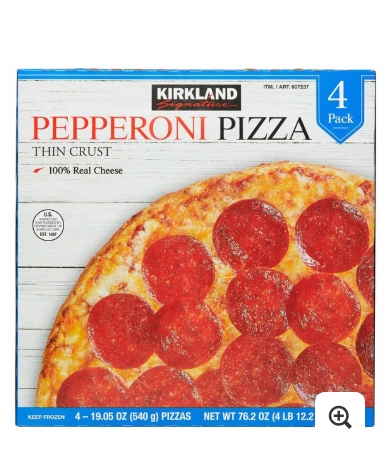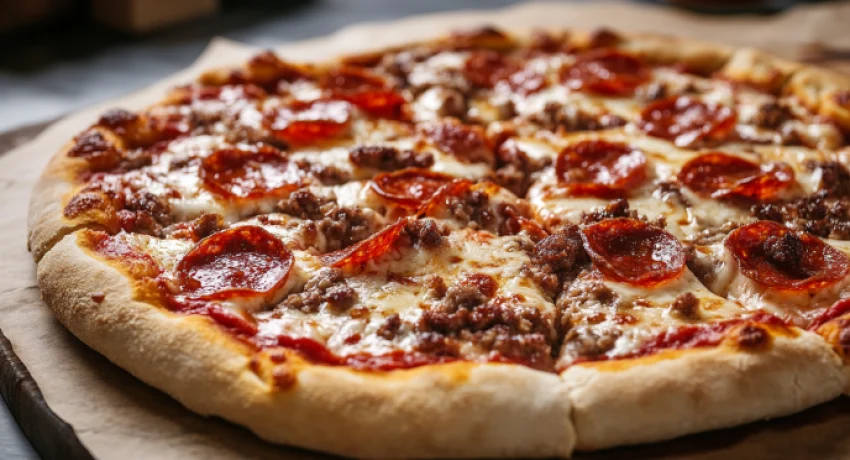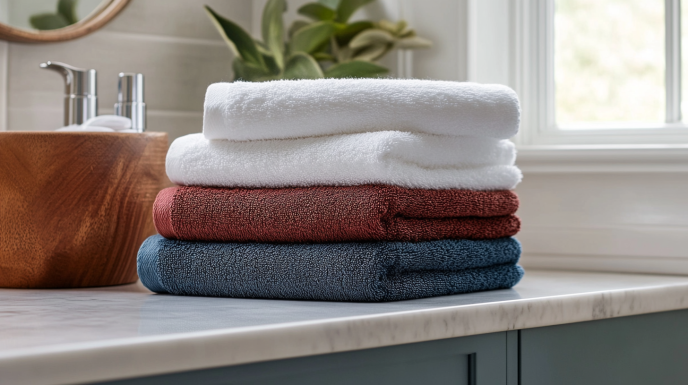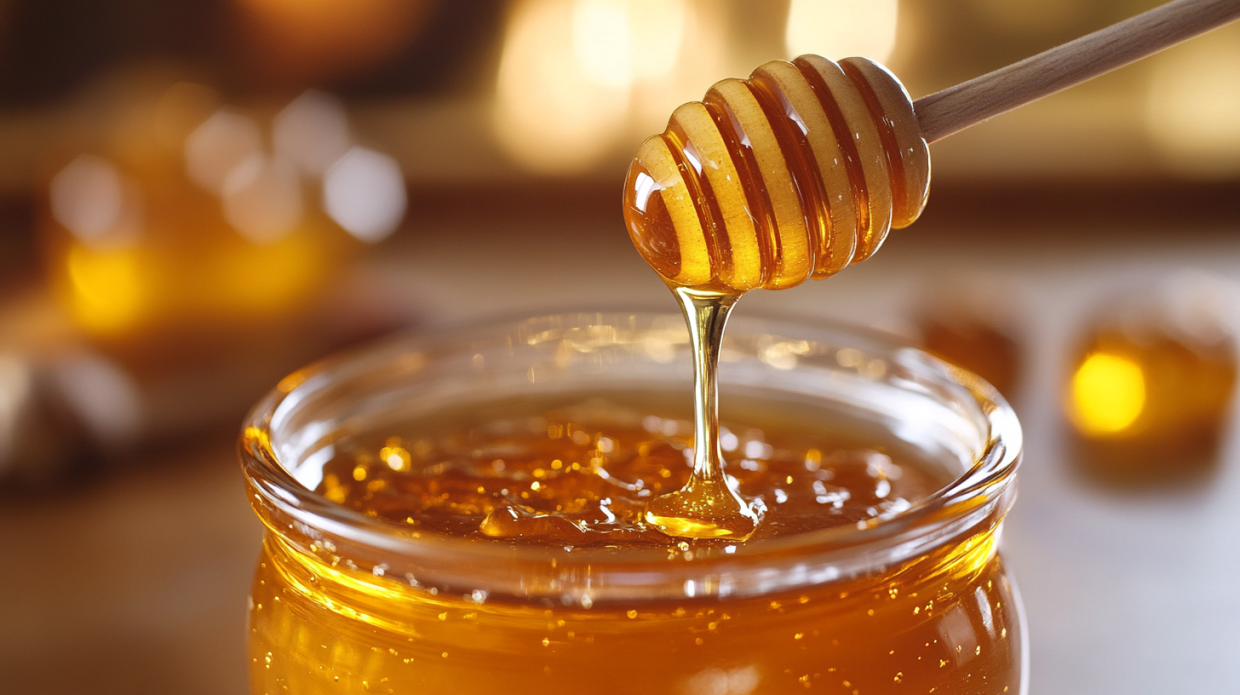
Kirkland Signature Pepperoni Pizza, 19.05 oz, 4-count
- Pepperoni Pizza; Thin crust; 100% Real Cheese; Product of the USA.
Affordable Luxury: Why Costco’s House Brand Pizza Deserves a Spot in Your Freezer
In the vast landscape of frozen pizzas, one contender has quietly built a loyal following among Costco members nationwide. Neither flashy nor heavily advertised, Kirkland Signature pizza offers an exceptional combination of quality, value, and flavor that rivals even your favorite local pizzeria. As a dedicated food enthusiast who’s sampled more frozen pizzas than I care to admit, I’ve compiled everything you need to know about this understated freezer staple.
The Kirkland Pizza Lineup: More Variety Than You Might Expect
Walking down Costco’s frozen food aisle, you’ll find Kirkland Signature pizzas typically grouped together in their distinctive packaging. The current lineup includes several mainstays that have earned their permanent status through consistent popularity:
Traditional Favorites
The classic Kirkland Signature pepperoni pizza remains the bestseller, featuring generous layers of slightly spicy pepperoni atop a bed of mozzarella and signature tomato sauce. The cheese pizza, while seemingly simple, showcases a perfect blend of mozzarella, provolone, and a hint of parmesan that creates depth most frozen cheese pizzas lack.
For those who crave variety, the supreme option delivers with a harmonious mixture of Italian sausage, pepperoni, green and red bell peppers, onions, and black olives. The meat lovers’ variant pulls no punches with its hearty combination of pepperoni, sausage, Canadian bacon, and traditional bacon crumbles.
Seasonal and Regional Offerings
Depending on your location and the time of year, you might encounter special editions that appear for limited runs. I’ve spotted a fantastic Margherita version during summer months, featuring fresh-tasting tomatoes and basil. Some regions carry a BBQ chicken variety that pairs tangy sauce with grilled chicken, red onions, and cilantro.
The seasonal offerings keep the lineup interesting, though availability varies significantly by region. My local Costco recently featured a limited-run Mediterranean version with spinach, feta, and olives that disappeared all too quickly from the freezer cases.
Price Point: Unbeatable Value Proposition
One of the most compelling aspects of Kirkland pizza is its price-to-quality ratio. While prices can vary slightly by location, a standard four-pack of Kirkland Signature pepperoni or cheese pizzas typically ranges between $11.99-$13.99. Breaking that down, you’re paying approximately $3-$3.50 per pizza—each of which easily feeds 2-3 people.
Compared to other premium frozen pizza brands that often charge $7-$9 for a single pizza of comparable size, the value becomes immediately apparent. Even more impressive is how this price point has remained relatively stable despite rising food costs across the board.
During my recent Costco visits, I’ve noticed occasional sales that drop the price even further, usually by $2-$3 per pack. These promotions typically coincide with major sporting events or holiday weekends—prime pizza consumption periods when savvy shoppers can stock up.
Fresh or Frozen: The Kirkland Pizza Production Method
Kirkland Signature pizzas are sold exclusively frozen, but their production process differs from many competitors. According to information printed on the packaging, the pizzas are flash-frozen immediately after assembly, preserving flavor and texture.
This flash-freezing process helps explain why the finished product tastes notably fresher than many competing brands. The dough maintains its structural integrity, the cheese melts evenly, and the toppings retain much of their original flavor profile.
Behind the scenes, Kirkland works with established pizza manufacturers who produce these pizzas according to Costco’s specifications. While Costco doesn’t publicly disclose their manufacturing partners for all products, industry insiders have suggested that some Kirkland pizzas are produced by companies that also make well-known national brands—just with Kirkland’s proprietary recipes and quality standards.
Ingredient Quality: What Goes Into a Kirkland Pizza?
Examining the ingredient list reveals Kirkland’s commitment to quality components:
The Foundation: Dough and Sauce
The crust begins with enriched wheat flour, water, vegetable oil, and yeast—standard pizza dough ingredients, but with minimal preservatives compared to many frozen competitors. The sauce features vine-ripened tomatoes, herbs, and spices without the excessive sweeteners or corn syrup found in many commercial pizza sauces.
Cheese Selection
The cheese blend varies by pizza type but typically includes part-skim mozzarella as the primary component. Most varieties incorporate additional cheeses like provolone or parmesan for depth of flavor. Notably, Kirkland uses real cheese rather than the “cheese food product” found on budget frozen pizzas.
Meat and Produce
The pepperoni contains no artificial colors and is made from pork and beef with traditional spices. The Italian sausage features recognizable seasonings like fennel and paprika. Vegetable toppings are individually quick-frozen to maintain texture and nutritional value.
While not certified organic, the ingredient list is refreshingly straightforward with minimal artificial additives. Costco has been gradually removing artificial preservatives and colors from Kirkland Signature products, and their pizza line reflects this commitment to cleaner ingredients.
Dietary Considerations: Options for Different Needs
Gluten-Free Options
Currently, Kirkland Signature does not offer a dedicated gluten-free pizza under their house brand. This represents one of the few gaps in their pizza lineup, especially as the gluten-free market continues to expand.
However, Costco stores typically carry alternative gluten-free frozen pizza brands like Sabatasso’s or Milton’s Craft Bakers, though these come at a higher price point than the standard Kirkland offerings. Industry rumors suggest Kirkland may be developing their own gluten-free option, but no official announcement has been made.
Vegetarian Selections
Vegetarians have several Kirkland pizza options to choose from. Beyond the standard cheese pizza, the vegetable supreme (available in most regions) offers a robust array of bell peppers, mushrooms, onions, and black olives. When available, the seasonal Margherita and Mediterranean varieties also provide excellent vegetarian options.
It’s worth noting that while these pizzas are vegetarian, they’re produced on shared equipment with meat varieties, which may be a consideration for strict vegetarians.
Organic Status
As of my latest visit, Kirkland Signature pizzas are not certified organic. The brand prioritizes value and quality across conventional ingredients rather than pursuing organic certification, which would significantly increase the price point.
For those specifically seeking organic frozen pizza, Costco typically stocks at least one organic alternative brand, though selection varies by location.
The Cooking Process: Bringing Out the Best in Kirkland Pizza
Standard Oven Instructions
The package recommends preheating your oven to 425°F and placing the frozen pizza directly on the middle rack for 12-15 minutes. While this method works reliably, I’ve found a few adjustments can elevate the results significantly:
- Preheat longer than you think necessary—at least 20 minutes to ensure your oven reaches true temperature
- Use a pizza stone if available, preheating it with the oven for optimal crust crispness
- For a crispier bottom crust, place the pizza on the lower third rack for the first 8 minutes, then move to the middle rack to finish
The total baking time remains consistent at 12-15 minutes, though I’ve found the pepperoni variety often needs the full 15 minutes while the cheese pizza can be perfectly done around the 12-minute mark.
Alternative Cooking Methods
While the conventional oven produces the most balanced results, several alternative cooking methods work surprisingly well:
Air Fryer Approach
Kirkland pizzas can indeed be prepared in larger air fryers, producing an exceptionally crispy crust in record time. For standard air fryers with 6-quart capacity or larger:
- Preheat to 375°F
- Cut the pizza into quarters to fit
- Cook for 5-7 minutes, checking frequently
The results feature an extra-crispy crust with perfectly melted cheese, though you sacrifice the convenience of cooking the entire pizza at once.
Grill Method
During summer months, cooking Kirkland pizza on a gas grill yields restaurant-quality results:
- Preheat grill to medium heat (approximately 400°F)
- Place pizza on aluminum foil or a pizza stone
- Close lid and cook for 10-12 minutes, rotating halfway through
The slight smokiness imparted by the grill complements the pepperoni and supreme varieties particularly well.
Microwave Emergency Option
While not ideal, you can microwave Kirkland pizza in a pinch:
- Place on a microwave-safe plate
- Heat on high for 3 minutes
- Let stand for 1 minute before serving
The crust loses its crispness, but for a quick lunch when time is limited, it remains edible if not optimal.
Nutritional Breakdown: What You’re Really Eating
A standard serving (1/6 of a pizza) of Kirkland Signature pepperoni pizza contains approximately:
- Calories: 300-320
- Total Fat: 14-16g
- Saturated Fat: 6-7g
- Sodium: 750-800mg
- Carbohydrates: 33-35g
- Protein: 13-15g
The cheese pizza offers a slightly lower calorie and fat profile, while the supreme and meat lovers’ varieties trend higher in both categories.
Compared to delivery pizza, the nutritional values are comparable or slightly better, particularly regarding sodium content. The portion size recommendation of 1/6 pizza seems modest to my real-world observation—most adults comfortably consume 1/3 to 1/2 of a pizza in a sitting, effectively doubling or tripling these nutritional values.
The pizzas contain no artificial colors and have been reformulated over the years to reduce preservatives, though they’re not marketed as “clean label” products. For those monitoring dietary intake, the clear nutritional labeling makes Kirkland pizzas easier to incorporate into meal planning than takeout alternatives.
Shelf Life and Storage: Maximizing Freshness
Kirkland Signature pizzas typically carry a frozen shelf life of 6-8 months from production, indicated by the “best by” date on the package. In practice, they remain safe and largely unchanged in quality for several months beyond this date if kept consistently frozen.
For optimal quality, store the pizzas flat in your freezer rather than on their sides, which can cause toppings to shift during thawing and refreezing cycles. Once the package is opened, any remaining pizzas should be placed in airtight freezer bags to prevent freezer burn.
Interestingly, the individual plastic wrapping around each pizza creates a surprisingly effective barrier against freezer burn. I’ve found forgotten Kirkland pizzas in the depths of my freezer months past their prime and been pleasantly surprised by how well they maintained their quality.
Consumer Reviews: What Kirkland Pizza Enthusiasts Say
Scanning online forums, social media groups, and in-person conversations reveals consistent themes in Kirkland pizza reviews:
The Praise
Most reviewers highlight the exceptional value proposition, with comments like “tastes like it should cost twice as much” appearing frequently. The pepperoni variety receives particular acclaim for its generous topping distribution and high-quality meat.
Crust texture earns frequent mention, with many noting it achieves the difficult balance of crispy exterior and chewy interior that many frozen pizzas miss. The cheese blend also receives consistent praise for melting evenly without the oiliness common in frozen pizzas.
The Critiques
The most common criticism focuses on inconsistent availability of specialty varieties, with many consumers expressing frustration when favorite seasonal options disappear. Some reviewers also note variation in quality between Costco locations, suggesting possible regional manufacturing differences.
A subset of reviewers finds the sauce slightly too sweet, though this appears to be a matter of personal preference rather than a quality issue. Others mention that the standard size can be awkward for smaller households, suggesting potential demand for individual-sized options.
Kirkland vs. The Competition: How Does It Stack Up?
When compared directly against other frozen pizza brands in comparable price tiers, Kirkland consistently outperforms on several metrics:
DiGiorno
While DiGiorno’s rising crust creates impressive volume, Kirkland offers more generous toppings and a more balanced sauce-to-cheese ratio. Kirkland’s cost advantage becomes striking when comparing the per-pizza price.
Freschetta
Freschetta’s crust achieves similar textural quality to Kirkland, but at nearly twice the price point. The topping quality appears comparable, making Kirkland the clear value winner.
Red Baron
Positioned at a lower price point than Kirkland, Red Baron offers decent quality but noticeably fewer toppings and a less complex flavor profile. The quality gap justifies Kirkland’s modest premium.
California Pizza Kitchen
CPK’s frozen offerings feature more innovative flavor combinations but at a substantial price premium. For classic pizza varieties, Kirkland provides better value, though CPK wins for unique flavor profiles.
The comparison becomes even more favorable when considering restaurant delivery pizza, where a comparable 16-inch pizza typically costs $15-$25, making Kirkland approximately 75-85% less expensive for similar quality.
Customization Potential: Making It Your Own
While Kirkland pizzas arrive fully assembled, they serve as excellent bases for customization before baking:
Adding Extra Toppings
The most straightforward enhancement involves adding extra toppings before baking. Fresh vegetables like sliced bell peppers, mushrooms, or spinach work particularly well, as the baking process naturally removes excess moisture.
For meat enhancements, pre-cooked options like crispy bacon, Italian sausage crumbles, or shredded rotisserie chicken (another Costco staple) integrate seamlessly. Adding these while the pizza remains frozen helps prevent toppings from overcooking during the baking process.
Flavor Boosters
Simple additions can dramatically transform the flavor profile:
- A drizzle of high-quality olive oil and fresh basil added after baking elevates the cheese pizza
- Red pepper flakes, oregano, or garlic powder sprinkled before baking adds dimension
- A light honey drizzle on the crust edges creates a sweet-savory contrast that works surprisingly well
- Balsamic glaze added after baking brings gourmet restaurant flair to the basic cheese variety
These customizations allow Kirkland pizza to serve as a convenient starting point rather than a finished product, expanding its versatility significantly.
Availability and Purchasing Options
Kirkland Signature pizzas are sold exclusively through Costco channels, maintaining their position as a membership benefit. They’re consistently stocked in the frozen food section of warehouse locations, typically in four-pizza packs.
In-Warehouse Availability
Warehouse availability remains the most reliable option, with core varieties (pepperoni and cheese) stocked consistently year-round. Specialty varieties follow more variable stocking patterns, often appearing for 2-3 month rotations before being temporarily replaced.
Online Options
Costco.com offers Kirkland pizzas for delivery in many markets, though the selection is typically more limited than in-warehouse options. The delivery service includes a premium that somewhat diminishes the exceptional value proposition, but remains competitive with other delivered grocery options.
Interestingly, Costco’s partnership with Instacart in many regions has made Kirkland pizzas available without membership in some markets, though at a higher price point that reflects both delivery fees and non-member pricing.
The Future of Kirkland Pizza: What’s Next?
Industry trends suggest several potential developments for the Kirkland pizza line:
- Single-serve options seem increasingly likely as smaller households become a larger demographic
- Gluten-free varieties appear to be under development, based on trademark filings
- Plant-based meat alternative toppings would align with Costco’s increasing focus on alternative proteins
- Premium “restaurant style” varieties with more artisanal ingredients could expand the line upward
Costco typically evolves product lines gradually, focusing on perfecting core offerings before expanding varieties. This methodical approach has served the Kirkland brand well, maintaining quality standards while slowly expanding options.
Conclusion: Why Kirkland Pizza Deserves Freezer Space
After examining every aspect of Kirkland Signature pizza—from ingredients and nutrition to cooking methods and value—the conclusion becomes clear: these unassuming frozen pizzas deserve consideration as a pantry staple.
The combination of quality ingredients, thoughtful preparation methods, and exceptional value makes Kirkland Signature pizza stand out in a crowded frozen pizza marketplace. While not perfect for every dietary need or preference, they successfully bridge the gap between convenience and quality that so many food products struggle to achieve.
For busy weeknights, unexpected guests, or simply satisfying a pizza craving without the delivery wait and expense, Kirkland pizzas provide a solution that doesn’t feel like a compromise. In a world of endless food options, finding products that deliver consistent quality, value, and satisfaction becomes increasingly valuable—and Kirkland Signature pizza quietly achieves this balance with impressive consistency.
Whether you’re a longtime Costco member or considering membership for the first time, the humble four-pack of Kirkland pizzas in the frozen food aisle represents one of the warehouse giant’s most compelling everyday values—one that continues to earn its dedicated following one slice at a time.




